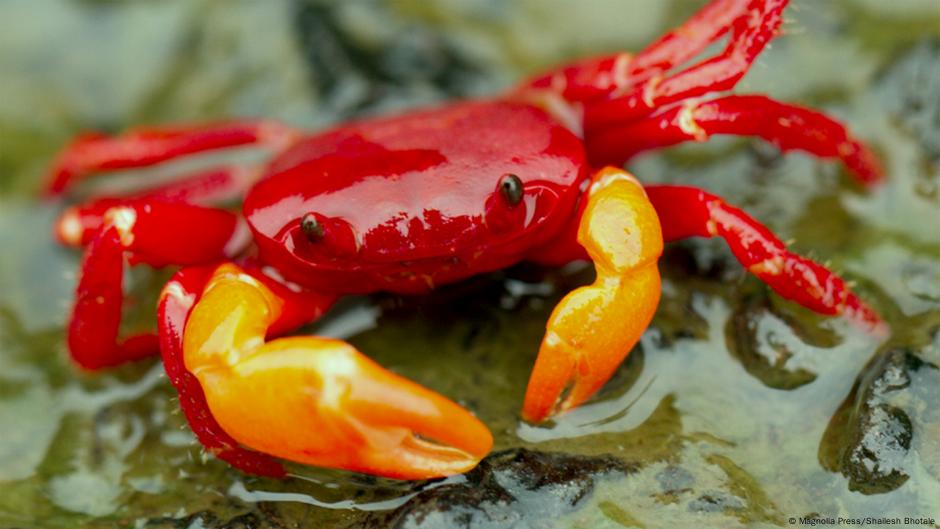Adaptation Of Flower Crab For Environment
Growing a bright colored flower with food in it for a visiting insect can take a. Lets explore how a blue crab is adapted to live in the waters of the Chesapeake.

Camouflage Animals Nature S Masters Of Disguise Camouflage Animal Adaptations Animals
This is evident as this species has been spread via shipping to North America as well as Europe.

Adaptation of flower crab for environment. This unique behavior is done so they can ensure no creatures which currently hide inside the hole which may be dangerous for them. Articles theses books abstracts and court opinions. Another adaptation would be that it.
They then enlarge their bubble of. Visiting insects help move pollen among flowers so seeds will form. To put in a short perspective these subtle changes are called adaptation and all living beings are constantly adjusting to the changing needs of environment.
Plants have some interesting adaptations that help them. Blue crabs are DECAPODS which means that they have ten legs. They actually are also able to see using their eyes which is put on the point of the eyestalks.
It migrates to Mexico or Canada in winter so that it doesnt get too cold and freeze. Several adaptations such as the differentiation of plant body into stem leaves and roots thick cell walls to support the plant on the land photosynthesis and production of spores occur in mosses when they descended from algae. A unique behavioral adaptation that they do is to use their claw first when they found a new hole in the rock that they can take as hideout.
Hummingbird Physiological Adaptations As a baby their muscles in their wings grow stronger so as an adult they can fly faster. For instance during migration mitten crabs burrow into. When they are introduced to a new environment their population becomes very large very fast and they change the structure of the local environment.
The male and female fiddler crabs are quite different. The Blue Swimming crab is commercially very important throughout the Indo-Pacific where they may be sold as traditional hard shells or as soft-shelled crabs. This adaptation is physical.
Isolates were characterized based on antimicrobial susceptibility genetic profile integrons carriage and. Search across a wide variety of disciplines and sources.
A primrose is a plant of European woodlands that produces pale yellow flowers. Mitten crabs can tolerate a wide range of environmental conditions. The antennae will be used by the crab so they will be able to feel the environment that surrounds them.
Those flies spread the pollen from the flower. Then the antennules as some chemoreception which will then be used by the crab so they are able to taste and shell their surrounding environment. Adaption to nocturnal life The average daytime temperatures in the desert often exceed more than 38C.
Sustained outbreak of CRAB was identified in the ICU July 2015 to December 2017. They are specially adapted for living in a range of waters with different salinities or saltiness of the water from the mouth of the Bay all the way to the top. The female crabs move into shallow marine habitats prior to hatching.
They have eyestalks so they can see better. When it sleeps if it runs out of energy it spreads out its wings and breathes slowly to save energy. Google Scholar provides a simple way to broadly search for scholarly literature.
And they release their eggs there and the newly hatched zoea larvae move into estuaries. There is a unique balance maintained between these changes and adaptation that is taking place. Nocturnal lifestyle helps to cut down the loss of water especially in desert biomes.
Some flowering plants use bright petals and sugar water called nectar to get insects to visit. Crabs are one of those animals in which the adaptation is clearly evident. A prime example of a visual system evolved to function in specific light environments is the fiddler crab used widely as a model to research aspects of crustacean vision and neural pathways.
Baumannii isolates were also collected from the environments of ICU and neonatal ICU NICU and blood cultures of septic neonates. Risk factors for acquisition of CRAB was studied. Mosses and Alternative Adaptation to Life on Land.
It has developed adaptations in cool moist environments which allow it to grow successful. A great diversity of adaptations is found among animals with compound eyes and even closely related taxa can show variation in their light-adaptation strategies. Its two types of flowers.
Special Adaptations 1 Their claws are extremely powerful they allow them to rip apart the flesh of dead organisms more efficiently 1 2 They carry water inside their carapace which allows them to fight off attackers by squirting water out of it 2. One adaptation is that the Plant smells like rotting meat to attract flies. Then they wait until their underwater webs have been triggered by a passing fish or other water insect and jump out of the bubble to attack.
Flowers are an adaptation that helps many plants make seeds to grow new plants.

Welcome Into The World Environment All Topics From Climate Change To Conservation Dw 16 03 2016

8 Facts About The Pom Pom Crab Crab Flower Crab Pom Pom

Summer Time Orchids Blooming In The Hawaiian Rainforest Growing Orchids Orchid Plants Orchids
Posting Komentar untuk "Adaptation Of Flower Crab For Environment"